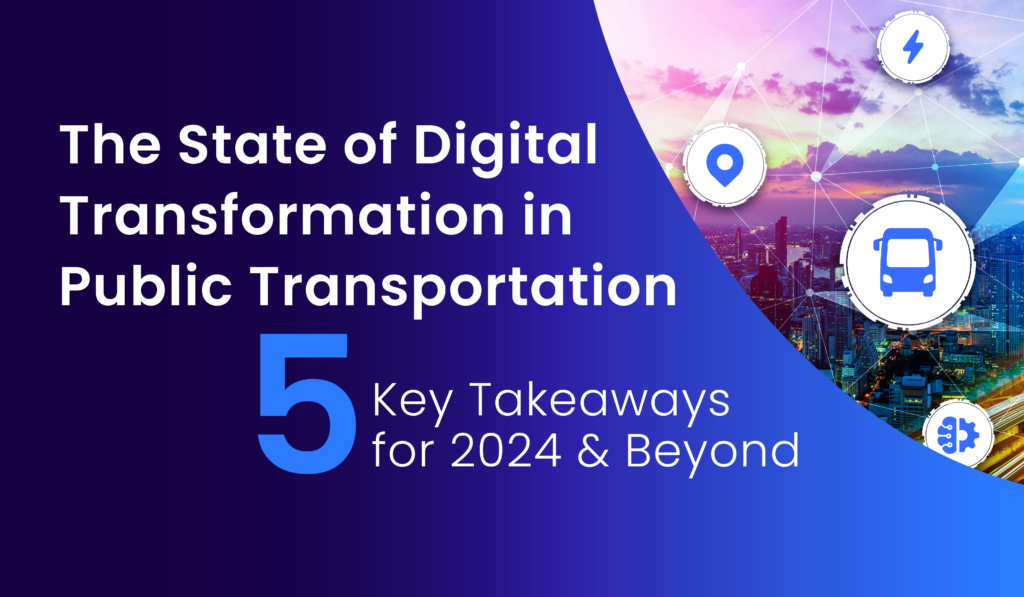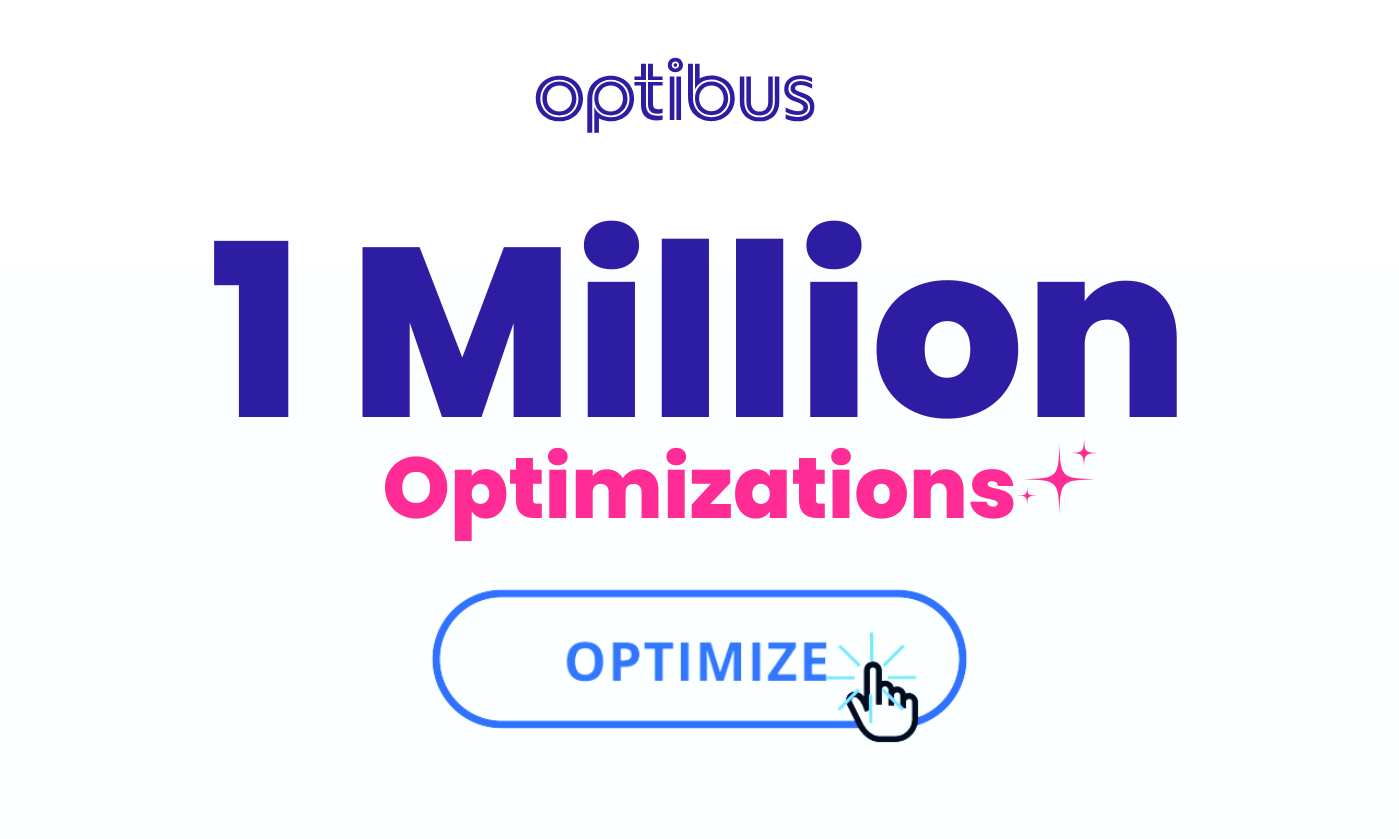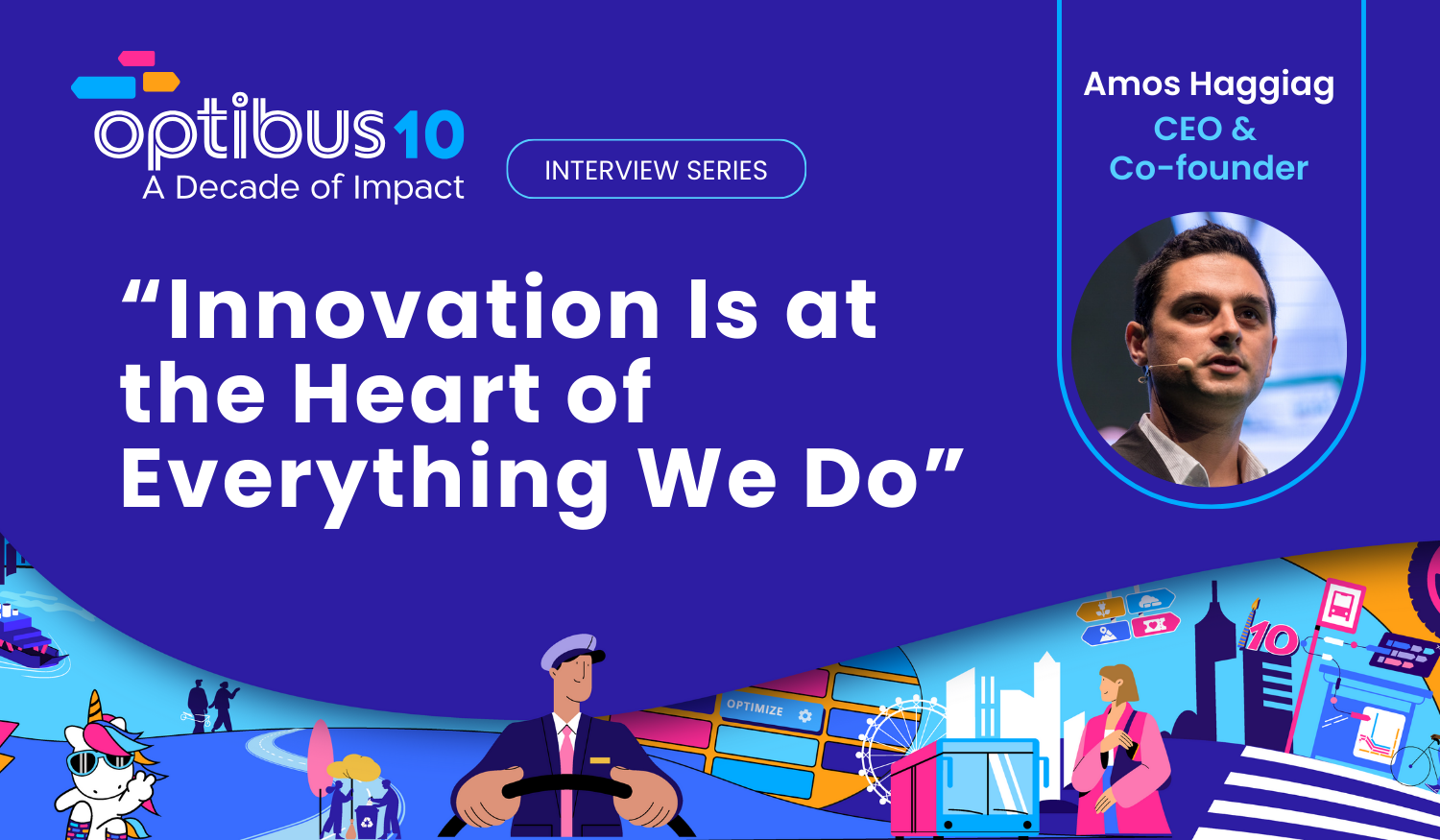2024 marks a significant milestone for Optibus: our tenth anniversary as a company and a decade of commitment to innovating an industry that positively impacts billions of people everyday: public transportation.
The “Decade of Impact” blog series dives into Optibus’ evolution, where we are today, and our vision for the future. We hope it brings everyone in the Optibus community closer to the positive impact you make on the world, and inspires more people to join us in making public transportation better. Together.
The Origin of a Vision: From Academia to Real-World Challenges
At university, Amos Haggiag and Eitan Yanovsky were no strangers to complex problems. As students deeply engaged in mathematics and computer science, they were drawn to challenging puzzles, particularly those that seemed insurmountable. Their passion for tough mathematical challenges wasn't just about solving problems; it was about exploring the boundaries of what could be achieved with the right combination of algorithms and innovation.
A Father's Challenge: Solving the Public Transportation Puzzle
The journey from theoretical math problems to practical applications took a personal turn when Amos's father, the chief financial officer (CFO) of a major public transportation operator, presented them with a real-world challenge that affects the daily lives of millions. He described it as the 'public transportation puzzle.' This puzzle involves the allocation and activation of many resources over a vast network in order to efficiently move thousands, sometimes millions, of individuals across and between cities, towns, and rural landscapes while considering many different factors, such as:
Where should routes go? Where should stops be located? What is the timetable? How many drivers and vehicles are needed? Which driver is assigned to which vehicle? Which vehicle is assigned to which route? Where and when will vehicles charge or fuel up? How will services be re-routed in case of road closures? How much will all this cost? And that’s just the beginning.
There are thousands of decisions to be made, with the amount of potential outcomes numbering into the billions (upon billions) depending on the size of the public transportation network. In that same discussion, Amos’s father said: you're in computer science and math. Is this a problem you can solve?
%20(1).gif?width=1920&height=1080&name=Travelling%20Salesman%20III%20(GIF)%20(1).gif)
The unsolvable puzzle: the famous traveling salesman problem
Confronting the Algorithmic Complexity of Public Transportation
During their university years, Amos and Eitan had encountered a variety of complex mathematical problems including the infamous Travelling Salesman Problem (TSP), a problem known for its deceptive simplicity and underlying complexity. The TSP posits a scenario where a salesman must visit various cities and return to the starting point by the shortest possible route. Simple as it may seem, this is an NP-Hard problem — one that can take exponential time to solve because there is no known algorithm that can solve it in polynomial time.
This theoretical background set the stage for understanding the magnitude of public transportation challenges. As complex as the TSP is, the transportation puzzle is exponentially more complex, requiring the management of not just one route but an entire system of routes, timetables, vehicle assignments, and countless other variables. Each decision point does not just add complexity; it multiplies it, creating scenarios where traditional algorithms falter under the sheer volume of data and the intricacies of practical constraints.
As they delved into this challenge, it became clear to Amos and Eitan that solving the public transportation puzzle required a radical rethinking of available tools and methods. The existing solutions for planning and scheduling — often manual or relying on outdated software — were insufficient for the scale and complexity of modern passenger transportation needs.
This realization was the catalyst for their decision to found Optibus in 2014, aiming to harness cutting-edge mathematical and computational techniques to revolutionize public transportation planning and operations.
The Birth of a Solution: The Early Days of the Optibus Software
After years of studying the public transportation puzzle from a mathematical standpoint and speaking with many public transportation providers, the first iteration of Optibus’ response to the computational complexity of service planning and operations was born: a software solution called Optibus Prime. It looks vastly different from today’s platform. But, what else can you expect from a bootstrapped start-up? ;) %20(2).gif?width=1920&height=1080&name=Scheduling%20GIF%20-%2010%20Year%20(4)%20(2).gif)
Optibus' product interface has evolved considerably over the past ten years. Here, you can see the design evolution of Optibus' Scheduling Gantt chart.
To represent the brand, a very cute bus-inspired mascot was created in the early days: the “Optibizer”. The Optibizer was retired long ago, and the Optibus logo has evolved multiple times since then until arriving at today’s route-inspired logo.
Investing in the Future
With the beginnings of a product and a brand, Optibus received its first round of institutional backing: a $1 million seed round in 2015, followed by a $12 million Series A from Pitango, Verizon Ventures, impact investor Sir Ronald Cohen, New Era, and Blue Red Partners.
These early investors gave Optibus the fuel needed to rev its entrepreneurial engines and research the best way to build and apply optimization algorithms in a public transportation context. We are thankful to them and all the investors who joined us along the way, including Volvo, Insight, Bessemer, SOMV, Tencent, and more, guiding us through our Series D and on to becoming the first unicorn start-up dedicated to public transportation.
The journey from theoretical mathematicians to innovators in public transportation demonstrates a deep engagement with not just the intellectual challenge of puzzles, but also the real-world impact that puzzle-solving and innovative thinking can have on our everyday lives. Because sometimes, the most complex puzzles are hidden in plain sight, in the routines and rhythms of city life.
Join our mailing list, follow us on social media (Linkedin, X, Facebook), or check back here next week to learn more about Optibus’ history, the evolution of our product, our clients, and our team.
Further Reading
- A Decade of Impact II: Breakthrough from start-up idea to software on the ground
- Optibus Celebrates a Decade of Impact in Public Transportation


-2.png)




%20(1).png)